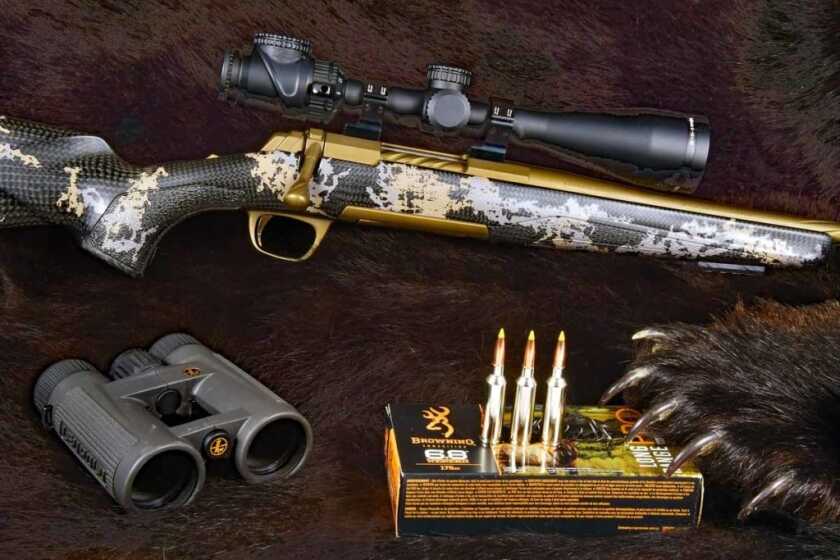
Most production hunting rifles can be lumped into three categories: cheap, mid-priced, and expensive. The new Browning X-Bolt Mountain Pro rifle falls in the final category. It is not designed for someone looking for a $300 rifle, and that’s OK. Browning calls it a “semi-custom” rifle, and the price reflects that with an MSRP of around $2,500.
I call it an aspirational rifle, meaning it’s one people will aspire to own once they find out just how good the gun really is. My first reaction, upon receiving the rifle for testing, was that it was a very nice gun but I wouldn’t be buying it. After testing the rifle at the range and hunting with it, my opinion quickly changed. This, I decided, was a gun that I simply must have, and that doesn’t happen very often.
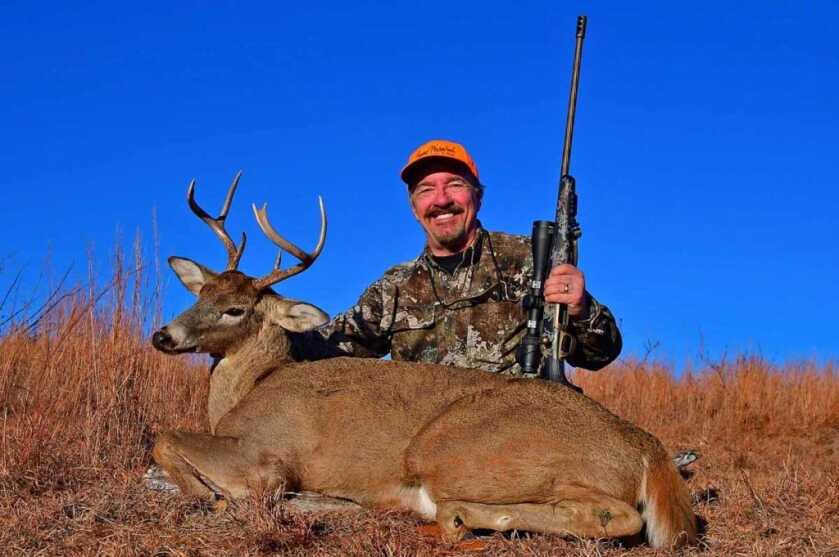
My change of heart was partly due to the fact that my test rifle was chambered in 6.8 Western, a new cartridge from Winchester and Browning which I have hunted with for two seasons and become fond of. This cartridge, which uses long, heavy-for-caliber, high-BC bullets, elevates .277 caliber bullet performance to levels that, in some ways, equal or beat the performance of some 7mm and .30 caliber magnum cartridges. The 6.8 Western is what the 270 WSM should have been, and it’s a perfect chambering for the Mountain Pro rifle, especially for those who hunt the big, open spaces of the West.
The Mountain Pro comes with all the features common to X-Bolt rifles but has some enhancements that take performance to the next level. Before we get to the upgrades, a quick review of the standard features that set X-Bolt rifles apart from the pack is in order.
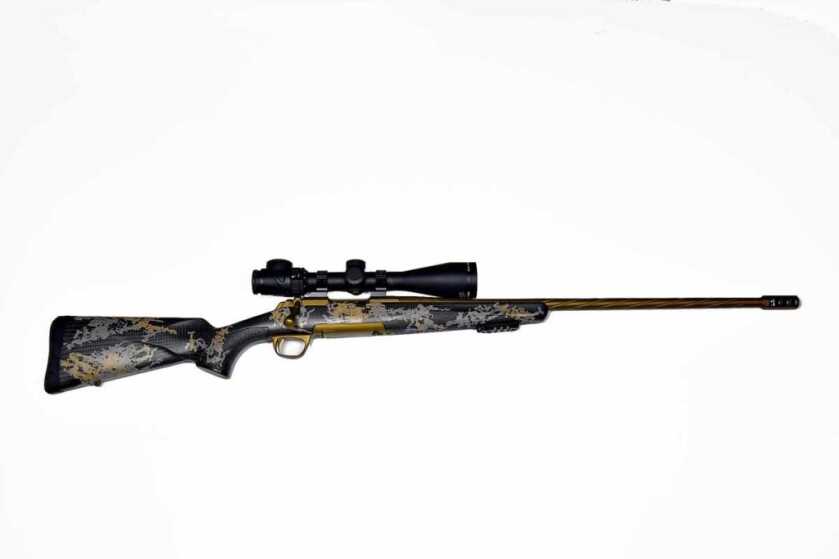
X-Bolt rifles were introduced in 2008 as a replacement for Browning’s flagship A-Bolt rifle. The X-Bolt was an entirely new design with modernized styling and an emphasis on better accuracy and long-range performance. The receiver is more compact and uses a patented detachable, flush-fitting rotary magazine, which feeds cartridges directly in-line with the bolt rather than feeding from an offset position. This enabled Browning to add material to the bottom of the receiver for greater rigidity and accuracy. The guns have a uniquely strong X-Lock scope mounting system, which replaces four centerline mounting-screw holes with eight outboard holes. Receivers are bedded at the front and rear for stability and are mated to free-floated, high-quality, button-rifled barrels made with a three-step reaming and separate honing process.
X-Bolt rifles retained the short, 60-degree bolt throw of the A-Bolt rifle, but have a bolt unlock button on top of the bolt handle, which allows cycling of the bolt with the tang-mounted safety engaged. Designers also gave X-Bolts a new, crisp-breaking Feather Trigger with chromed, polished components and a trigger pull that’s adjustable from three to five pounds. The rifles are equipped with an Inflex recoil pad that deflects recoil energy downward, away from the shooter’s face, to reduce felt recoil.
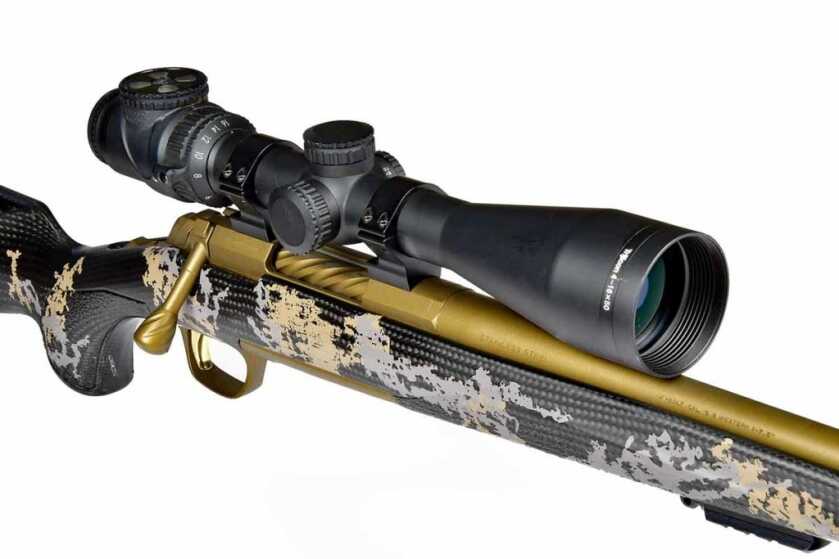
The Mountain Pro rifles takes recoil reduction a step further with a new Recoil Hawg muzzle brake, which Browning says reduces recoil by as much as 77 percent. After testing the rifle, I’d say that percentage is about right, which is all the more impressive when you consider that the rifle weighs only 6 lbs., 2 oz. despite the added weight of the muzzle brake and a 24-inch barrel. Weight savings are derived from the use of a carbon fiber stock, a streamlined receiver, and spiral fluting of the barrel and bolt. The stock has stippling in the right places to enhance grip in wet weather and, in addition to sling swivel studs, a trim removable Picatinny accessory rail beneath the forend.
The Mountain Pro is a true go-anywhere rifle designed to withstand the elements. The stainless-steel receiver and barrel are protected with a burnt bronze Cerakote finish that nicely compliments the tan-and-grey accent graphics on the stock which create a unique camouflage pattern. You can also get the Mountain Pro with a Tungsten Cerakote finish. The overall appearance of the rifle is aesthetically pleasing, with clean, sleek, and tapered lines, but the beauty of this rifle is more than skin deep. Sometimes, it’s the small things you can’t see that make a big difference, and that’s true with the Mountain Pro. The carbon fiber stock, which weighs 1/4-pound less than predecessor carbon fiber stocks, is filled with noise-dampening foam. The barrel has also been subjected to a proprietary lapping process that reduces fouling, making the rifle easier to clean and minimizing the need for a time-consuming break-in process. The barrel of my test rifle also has a fast, 1:7.5 rate of twist to properly stabilize the heavier bullets used in 6.8 Western cartridges.
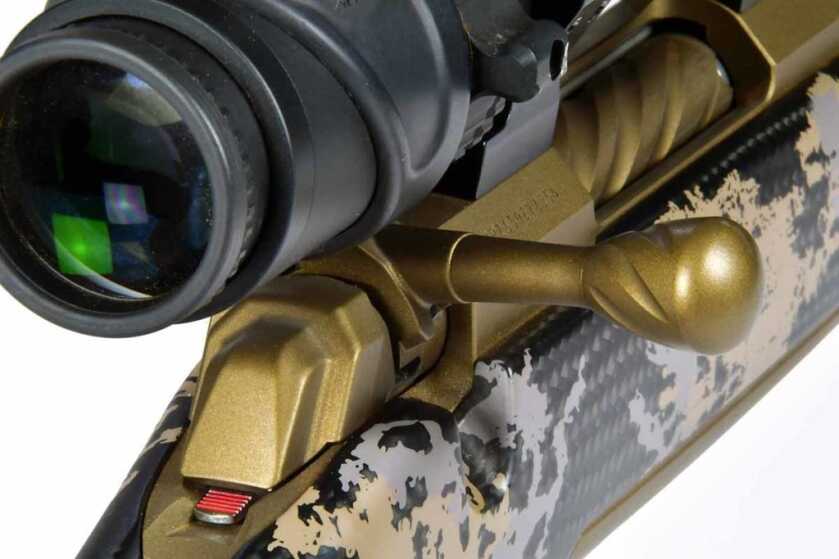
Attention to detail is evident with the Mountain Pro, and that extends to the gun’s detachable magazine. It may be made of polymer and composite, but it’s built tough. Rather than simply stacking cartridges, the design retains them by the shoulder, eliminating the possibility of bullet tips deforming by slamming into the forward wall of the magazine under recoil. The release latch is built into the magazine itself and protected within a recess at the bottom of the receiver. Bullets do not rattle around in the magazine, which drops freely into the hand when you operate the release latch.
In addition to 6.8 Western, the Mountain Pro is available chambered for 6.5 Creedmoor, 6.5 PRC, 300 WSM, 30-06 Springfield, 7mm Rem Mag, 28 Nosler, 300 Win Mag, and 300 PRC. Mountain Pro Long Range versions come with heavier 26-inch barrels and weigh about 10 ounces more. They are offered in many of the same chamberings plus the additions of 30 Nosler and 300 Rem Ultra Mag.

Functionally, my test rifle ran with flawless precision. The bolt did not require undue force to operate, despite the short bolt throw. Ammo fed, fired, and ejected without issue. Cycling of the small-diameter bolt, which has three locking lugs, was smoother than I expected since the bolt also has a protective Cerakote finish. The gold-plated Feather Trigger broke at an average pull weight of 3 lbs., 2 oz. That’s slightly heavier than I prefer on a hunting rifle, but I saw no need to adjust the trigger because it broke so cleanly, with no creep, no take-up, and minimal overtravel. It’s one of the better triggers to be found on production guns these days.
As enamored as I was with the rifle, one question remained: Would it shoot as good as it looks? To find out, I mounted one of my favorite hunting scopes, a Trijicon Accupoint 4-16×50 model, in a set of Talley lightweight rings. I only had two 6.8 Western loads on hand to test. One was a Browning Long Range Pro Hunter load that pushed 175-gr. Sierra GameKing Tipped bullets out of the barrel at 2,746 fps. The other was Winchester’s Copper Impact load, which launched 162-gr. Copper Extreme Point bullets at 2,833 fps. Those velocities were slightly slower (minus 89 fps and minus 42 fps, respectively) than factory-stated numbers, but that’s typically the case and was no surprise.

What was surprising was just how well the rifle shot both factory loads. The Browning load produced average groups measuring just 0.46 inches, with a best group of 0.39 inches. Winchester’s copper load shot a best group of 0.42 inches, with an overall average for all groups of 0.58 inches. Notably, that was on a day when the wind blew 5-12 mph.
With the rifle shooting so well, I couldn’t stand the thought of returning it without hunting with it, so I arranged a last-minute whitetail hunt on a ranch in northwest Oklahoma with my pal Troy Cunningham of Legend Waterfowl, Whitetails & Rios. That ranch has produced some big bucks, and during my stay, a couple of hunters in camp shot deer in the 165 class.
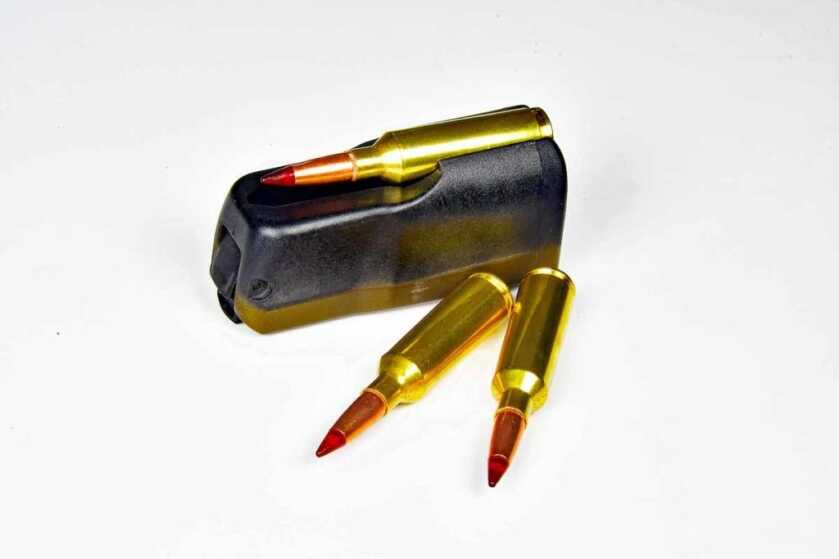
I was not as fortunate. We were hunting during the peak of the rut, and bucks were tough to pattern. They were ignoring feeders and cruising big draws with heavy cover, presenting only fleeting shot opportunities at a considerable distance from the hunting blinds. It was like spot-and-stalk hunting, but without the stalk. I briefly had one very good buck in my sights, but couldn’t take the shot because it was 25 minutes before the legal shooting light. The buck was not inclined to hang around while I stared at my watch.
With my hunt winding down, I spotted a big-bodied management seven-point buck in an opening 200 yards away. Wanting to put some more venison in the freezer, I quickly set up for the shot, slowly exhaled, and touched off the trigger, sending a 175-gr. Sierra GameKingTipped bullet his way. The buck ran 20 yards and dropped. It had been a perfectly placed heart shot.
At that moment, I knew I wouldn’t be sending the rifle back. If you get your hands on one, chances are you won’t let go of it, either.

SPECIFICATIONS: Browning X-Bolt Mountain Pro Rifle
Caliber: 6.8 Western, as tested
Action Type: Bolt action stainless
Trigger: Adjustable
Barrel: 24-inch stainless steel
Rate of twist: 1:7.5
Finish: Burnt bronze Cerakote
Stock: Carbon fiber with accent graphics
Magazine/capacity: detachable, 3+1
Sights: None, drilled and tapped
Muzzle brake: Recoil Hawg
Overall Length: 44 inches
Weight: 6 pounds, 2 ounces
MSRP: $2499.99

CONTACTS:
Legend Waterfowl, Whitetails & Rios
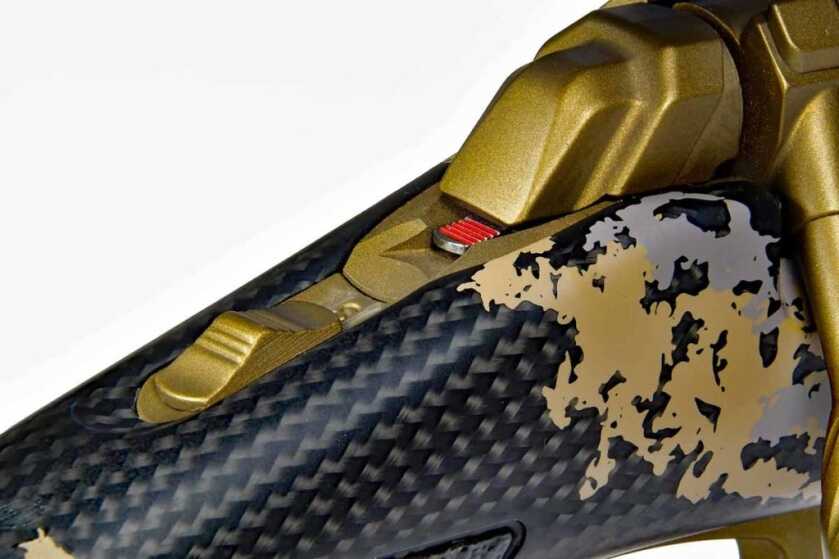
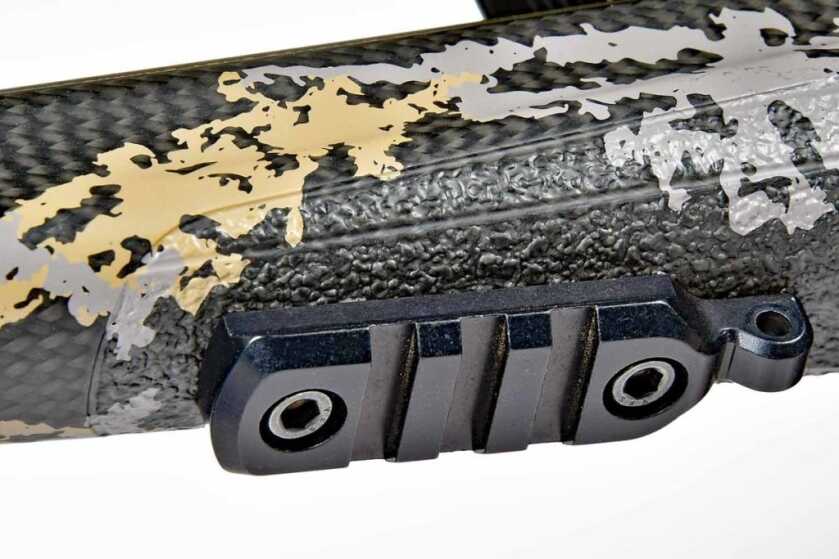



I have an X-bolt in 26 Nosler, shoots just over an inch at 100 yards, with handloads. Factory ammo is about 3 inches at 100 yards. Sent back to Browning twice (you should see the re-crown they did). Came back with same accuracy and was told it meets their accuracy standards (1.5 inches at 50 yards). So now it sits, won’t buy another Browning.
Looks great and appears to shoot well too! My only complaint is the muzzle brake. I won’t be buying one of those noise makers any time soon-
Ditto. I trust that the brake is removable for those of us that enjoy and would like to keep our hearing?
Where is this ‘not quite Rolex, not quite Timex’ rifle made? Japan?
Almost complete esthetically speaking ,almost…. some multi colored ‘Lobamba’ balls and a sewn Naugahyde rolled and pleated recoil pad would finish the existing platform quite nicely!. Chrissake what ever happened to beautiful deep salt bath bluing and nicely grained walnut??.
I gave owned a Browning A bolt that is one of my favorite rifles but my CZ rifles will match everything that I liked in my Browning and cost less.
We have a plethera of odd caliber cartridges, none of which outperforms a 300 win mag. My 25 year old Remington Sendero still puts three bullets through the exact same hole at 200 yards. It is, however, a load to tote all day.
I have absolutely no desire to shoot a gun with as much recoil as a 300WM, like most of us probably. Nor do I ever care to “outperform” one. This caliber is appealing because you can shoot fairly heavy, efficient bullets at a reasonably low recoil cost. Shall we all carry 338 Lapuas? 50 BMG? Obviously joking. I try not to complain when we have lots of choices, and I personally do like the 270 caliber, but as always, it’s not for everyone in every situation. I do not plan to buy a 6.8 western, but I certainly do like it.
Can you please send a magazine
Make it in 338 Win Mag and I’ll buy one. Ive already got dies,cases,bullets etc for it.
Sorry, but the Pre67 Safari, Mauser action was the best.
Very fine rifle but my $600 Savage is just as good. Just a little heavier.
Another Gucci rifle with a carbon fiber stock.
Purdy tho.
The Hell’s Canyon Speed is a better value.